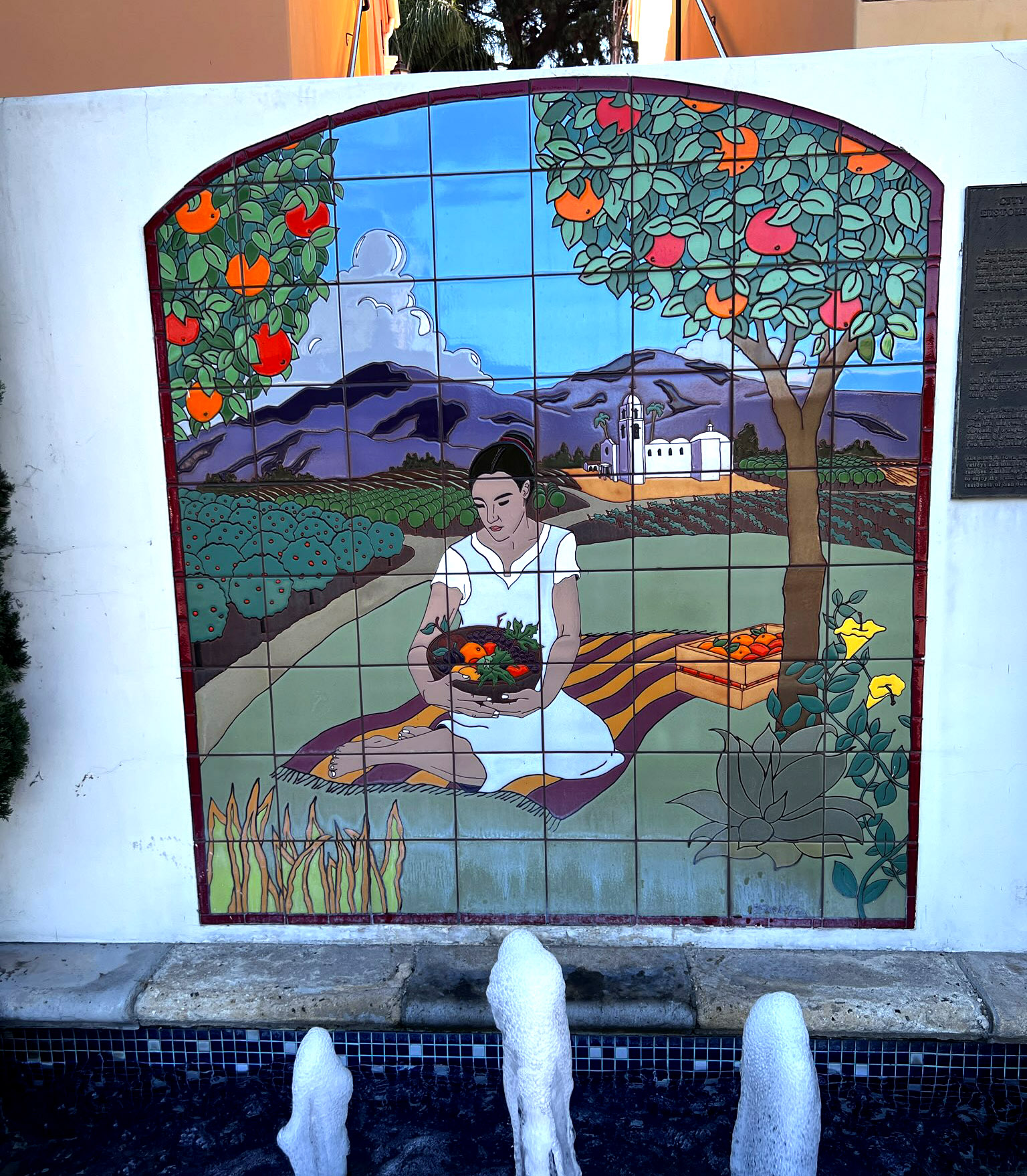
14 | The Road To Town

This mural was created to comply with the City's Historical Depiction Policy, Commissioned by the Ranch Ortega Development Group, it was competed in 2001 by Chris Bennett.
The text below is taken from the plaque next to the mural.
Buried This image portrays a woman taking a quiet moment out of her day to enjoy the fruits of her labor. This mural is dedicated to the hard-working residents of San Juan Capistrano.
Beneath this commercial center are the remains of the original Ortega Highway. Evolving from Native American walking paths, to wagon trail, to gravel auto road, and finally to State Highway 74, the “Ortega” has been a social and commercial link for the inhabitants of San Juan Capistrano and lands to the East for centuries. Those lands included the therapeutic San Juan Hot Springs and the pristine area over the mountains at Lake Elsinore
It was developed as an actual highway during the depression years of the early 1930’s. Named in honor of Jose Francisco Ortega, Sergeant and Scot for the Portola Expedition in 1769, the “Ortega” and the valley through which it runs has a rich agricultural history.
Over the years, the O’Neill, Forster and Belford families successfully ranched and farmed this immediate area. Cattle, sheep, orchards of walnuts and citrus, and row crops existed in abundance until late into the 20th century.
Dr. Alexander Hamilton Rowan, who wrote a weekly column during the 1890’s in a weekly newspaper called the Santa Ana Standard about the productivity of the Capistrano Valley and in 1891 summarized the following:
For the year ending in May 1891 the valley produced: “225 tons of hay; one thousand quintals of wool; ten thousand mutton sheep, lambs, wegglers, and ewes; sixty-two tons of English walnuts; six cans of honey; six carloads of oranges; eight carloads of corn; three tons of dried fruit; three carloads of green apples; two tons of pears; two thousand head of cattle and two hundred head of horses.”
The Road to Town memorializes a not-too-distant time when the surrounding valleys and hillsides were covered with bountiful agricultural fields and ranches.
About the artist
Chris Bennet was a well known local artist at the time of this commission. He work included traditional Italian street painting and combines the gracefulness of renaissance art and the vibrancy of Mexican art.